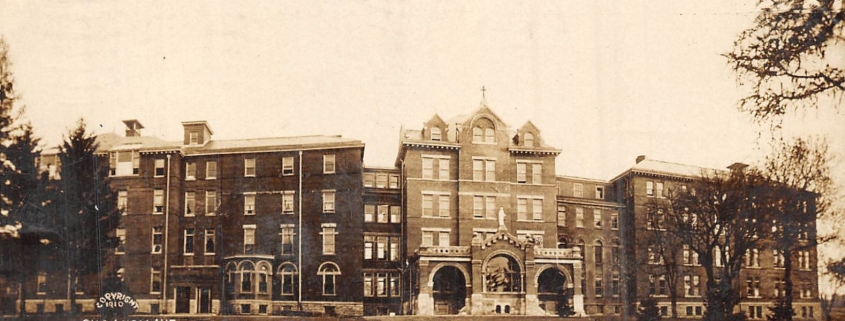How Prayer and Determined Nuns Created a Great Hospital
“Therefore I tell you, whatever you ask for in prayer, believe that you have received it, and it will be yours.”
– Mark [11:24]
In 1883, a devastating tornado hit a small Minnesota town, causing numerous deaths and a significant number of injuries. The local doctor, aided by his two sons, worked round the clock to help the injured. Nearby, a convent of nuns, The Sisters of Saint Francis, also played a crucial role in providing nursing care to the victims. The collaboration between the doctor and the nuns was key to saving many lives.
Inspired by this experience, Mother Alfred Moes, the head of the Sisters, proposed building a hospital with the local physician and his sons providing the medical care. The doctor was initially hesitant because the town’s population seemed too small to support a hospital. Additionally, the estimated construction cost was $60,000, equivalent to nearly $1.5 million today. Understandably, he doubted that a small Midwest convent could raise such a large sum of money. However, he agreed to participate if the funds were secured.
Undaunted by the challenge, Mother Moes rallied the nuns to raise the necessary funds. They organized craft fairs, tutored students after school, sewed, and solicited cash donations. Impressively, it didn’t take the nuns long to accumulate the required funds. By using the funds they raised and mortgaging their convent, they amassed enough capital to construct the hospital. Four years after the tragic tornado, Saint Mary’s Hospital was established in Minnesota.
The physician and his sons became the inaugural doctors. The first patient required eye surgery, which was successfully conducted. The nuns, transitioning into nurses, assisted in the hospital’s operations.
During that era, hospital visits were frequently associated with dire outcomes. The germ theory of disease was not fully accepted, and proper sanitation practices were not universally adopted. Astonishingly, many surgeons of the time did not wash their hands post-surgery or after visiting patients, contributing to alarmingly high mortality rates.
However, St. Mary’s Hospital was an exception. The outcomes there were significantly better. The physician and his sons were early adopters of safe sanitation practices, adhering to the principles of antisepsis popularized by Joseph Lister in the 1860s and 1870s. As word of the superior care at St. Mary’s spread, people from neighboring towns and eventually from across the country sought treatment there.
The physician and his sons were also dedicated to staying current with the latest medical advancements. Each year, one of the sons would travel abroad to explore the newest developments in medical science, bringing back new medical procedures after each visit.
Unsurprisingly, as the outcomes for their patients far surpassed those of other hospitals, not only in the United States but globally, more physicians joined St. Mary’s, necessitating expansions to accommodate the increasing patient load.
As the hospital grew, the sons implemented innovative management practices. They salaried the other physicians and fostered a collaborative environment. Because the doctors were not paid based on services performed and were salaried, it wasn’t uncommon for a doctor to consult or transfer a patient to a more experienced doctor. This approach facilitated the exchange of insights among the doctors and contributed to the establishment of “Patient-Centric Care.”
As cancer treatments advanced, the sons installed pathology departments adjacent to the operating rooms, enabling physicians to make expedient treatment decisions and minimize the need for future surgeries. Today, many other hospitals send tissue samples out to laboratories, many times causing the patient to have to go through another surgical procedure. St. Mary’s method allowed the surgeon and the pathologist to discuss the results as the surgery was occurring.
What began as a vision of a group of nuns in 1883 evolved into the world’s most prestigious hospital. Even after the physician and his sons passed away, the hospital maintained its standing as the world’s best hospital, as ranked by U.S. News and World Report. The Hospital continues to look for new practices and its doctors, from some of the best universities in the world, are still on a salary.
Today, the hospital is known as the Mayo Clinic, named after the local doctor, W.W. Mayo, and his two sons, William and Charles. Although the Mayo’s were widely celebrated, it was Mother Moes and the nuns’ faith-filled prayers that catalyzed the creation of this extraordinary institution.
What appeared impossible to many was realized by the nuns through prayer, faith, and a steadfast commitment to fulfilling God’s work.
Photo By Carl A. Holland (U.S. copyright 1910) – eBay item 351186373495, Public Domain, https://commons.wikimedia.org/w/index.php?curid=44973514



